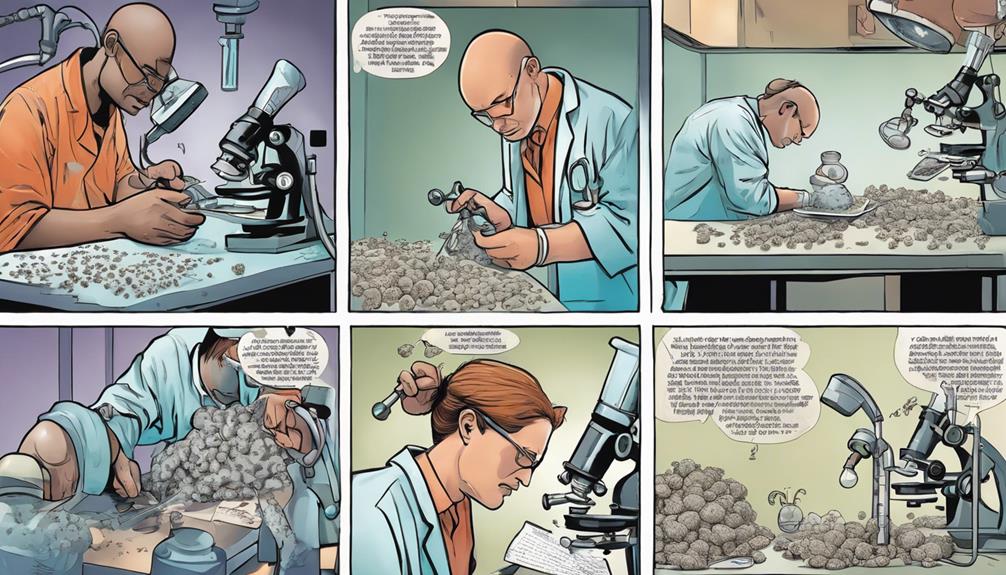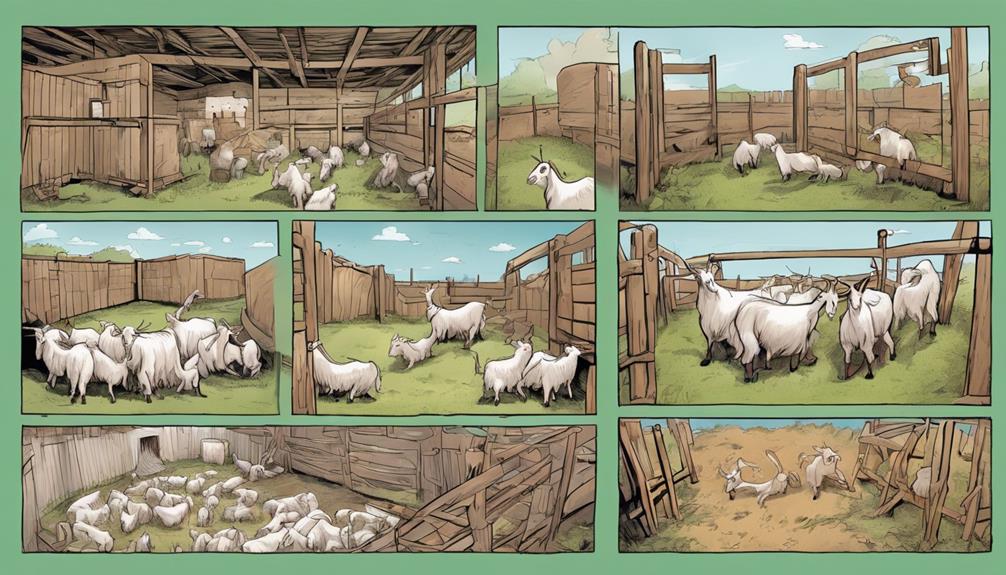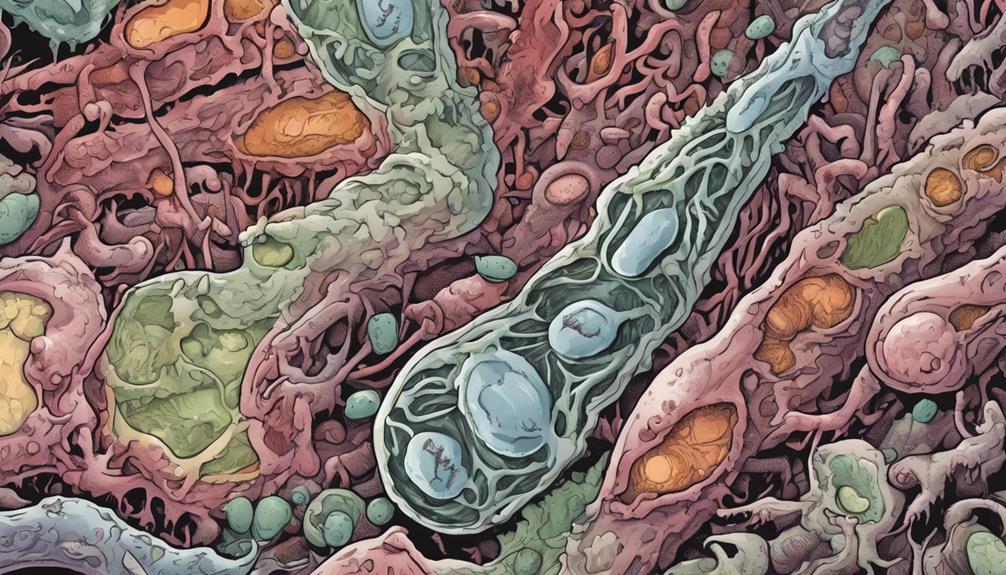Understanding coccidia and their impact on goat intestines is crucial for maintaining goat health. These microscopic parasites can disrupt the intestinal health of goats, leading to significant health issues.
A quick solution to address coccidia involves implementing strict hygiene practices in feeding and housing, alongside regular veterinary check-ups for early detection and treatment. This approach minimizes the risk of infection and helps maintain the health and wellbeing of goats.
Effective management and preventive strategies are key to controlling coccidia in goat populations.
Here is an article we wrote about mud scald in goats. And you might want to know about this home remedy for sick goats.
Coccidia primarily affects young goats, especially those aged 5-8 weeks. Early detection through fecal tests and necropsy aids accurate diagnosis. Treatment with sulfa drugs and oral drench medicines like amprolium is crucial. Prevention involves strict hygiene, regular monitoring, and vaccination in high-risk areas.
Epidemiology of Coccidia in Goats
Coccidia affects goats, especially the young ones because they shed more oocysts after birth. Goats aged 5-8 weeks are at high risk of getting sick from Eimeria spp., which attacks their intestines. This shedding spreads coccidiosis, so spotting it early is key.
Adult goats can carry the parasite but get sick less often. Signs in kids include poor poop, less hunger, weight loss, and sometimes bloody diarrhea and tiredness. To fight this disease, keep living spaces clean, lower oocyst contact, vaccinate in risky places, and check poop regularly.
Knowing how coccidia spreads in goats helps us protect them better.
Clinical Symptoms and Findings
Spotting signs of coccidiosis in goats is key for quick action. Look out for these symptoms in your goats:
- Diarrhea, sometimes with blood
- Weight loss and poor poop shape
- Less hunger and tiredness
- Dehydration in bad cases
- Higher death rates, sometimes in just 24 hours
Coccidiosis hits young goats the hardest, often between 5-8 weeks old. For a good check-up, you need to look at their history, how they act, and test their poop.
Treating them involves special meds to fight coccidia, and care to help them drink and eat.
To be sure it’s coccidiosis, you can check with smear tests and looking at tissue samples. Catching these signs early helps keep your goats healthy and reduces coccidia problems in your herd.
Diagnostic Methods for Coccidia

Fecal flotation is a common way to find out if goats have coccidia by looking at poop samples under a microscope to see coccidia eggs.
During a necropsy, you might see white bumps in the small intestine, which helps diagnose coccidiosis in goats.
Histopathology is very important because it checks tissue samples for disease signs, helping identify the coccidia type infecting the goats.
Finding coccidia eggs in poop means there’s an infection. However, it doesn’t always show that the goat is sick.
Treatment Strategies for Coccidia
Treating goats for coccidia usually means giving them oral drench medicines like amprolium for a set time. Sulfa drugs, such as Albon and Sulmet, work well in the early stages of a severe coccidia infection in goats. Although sulfa drugs mightn’t completely cure coccidia, they help stop other infections from happening and lessen symptoms.
Always ask a vet for advice on what medicine to use and how much to give to treat coccidia in goats properly. It’s also better to wait the right amount of time before using the goat’s meat for food after treating them with these drugs.
- Oral Drench Medicines: Give drugs like amprolium as your vet directs.
- Sulfa Drugs: Know that Albon and Sulmet help control coccidia symptoms.
- Vet Advice: Always talk to a vet for specific treatment plans and doses.
- Stop Secondary Infections: Sulfa drugs help prevent more health issues.
- Meat Waiting Times: Make sure to wait the required time before eating the goat’s meat after treatment.
Prevention and Control Measures

To stop and manage coccidiosis in goats, it’s very important to keep their living areas clean and follow strict hygiene rules.
Start with keeping everything clean and managing the goats well. Clean and disinfect where they live regularly, don’t let it get too crowded, and use a system where all goats move in and out together to lower their chance of getting sick.
In places where coccidiosis is common, vaccinating the goats might help prevent outbreaks. Catching the disease early is key, so check the goats and their poop often.
By checking their poop and finding the disease early, you can respond quickly. Using medicines like sulfadimidine can reduce the disease spread and protect the goats.
natural remedies for sick goats
Frequently Asked Questions
What Does Coccidia Do to the Intestines?
Coccidia invade intestinal cells, causing damage that leads to enteric coccidiosis in goats. This results in diarrhea, weight loss, and potential fatality in infected goat kids. The presence of coccidia oocysts in feces can be detected early.
What Does Coccidia Do to Goats?
Coccidia in goats invade intestinal cells, causing enteric coccidiosis. Symptoms include diarrhea, weight loss, and dehydration. Faecal oocyst shedding is detectable from day 8 post-infection. Gut microflora changes occur. Fatal outcomes can happen within 19-25 days post-infection.
What Is the Best Medicine for Coccidiosis in Goats?
For coccidiosis in goats, the best medicine is often Amprolium or Sulfadimidine. These drugs effectively combat the parasite. Adding coccidiostats like Decoquinate or Monensin to feed can also prevent the disease. Consult your vet for proper guidance.
Is Corid Safe for Goats?
Yes, Corid is safe for goats when used correctly. Following proper dosage and administration guidelines from your vet is key. It effectively treats coccidiosis, protecting your goats from this harmful parasite.

2 thoughts on “What’s Coccidia: Understanding the Menace to Goat Intestines”